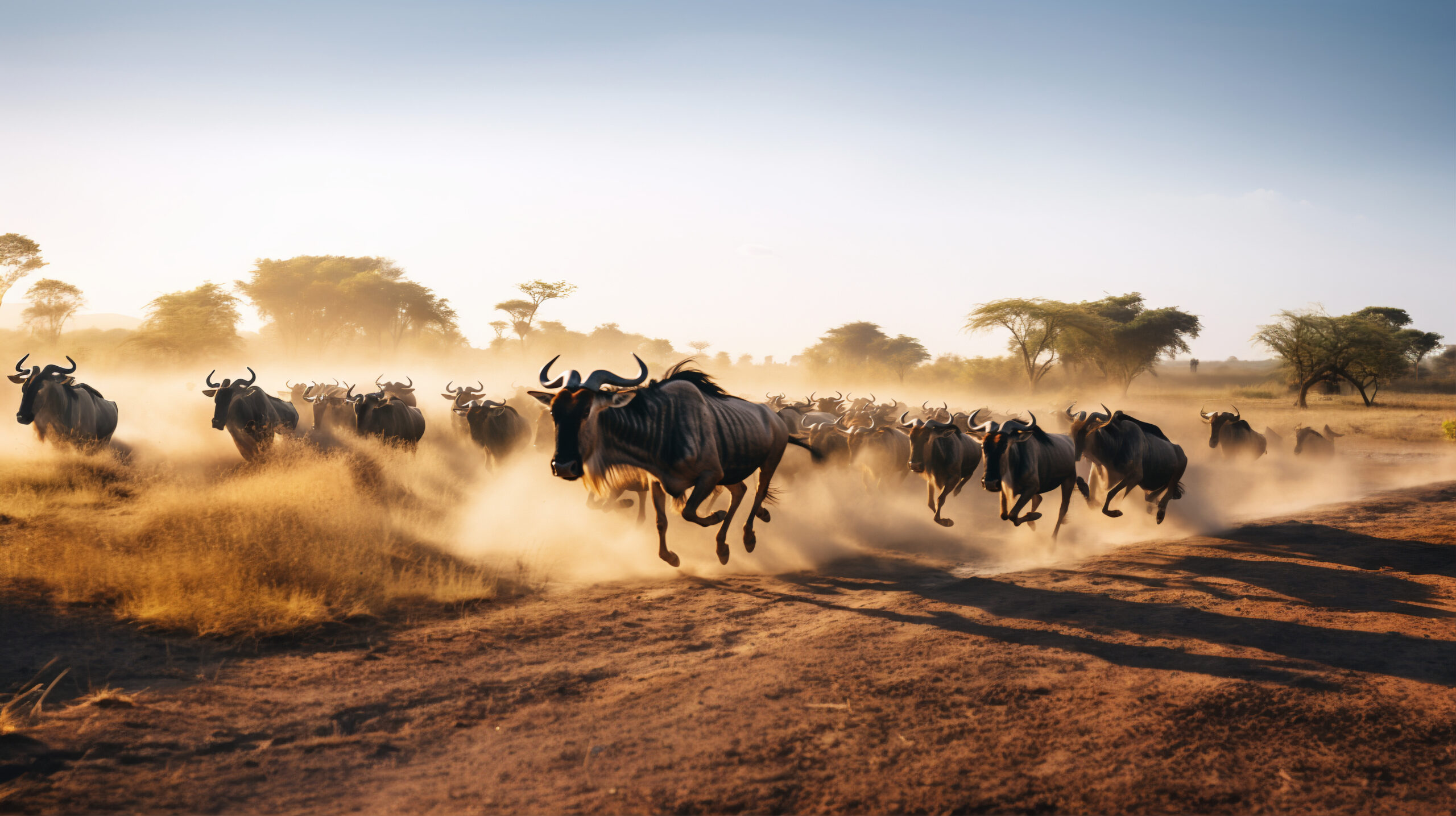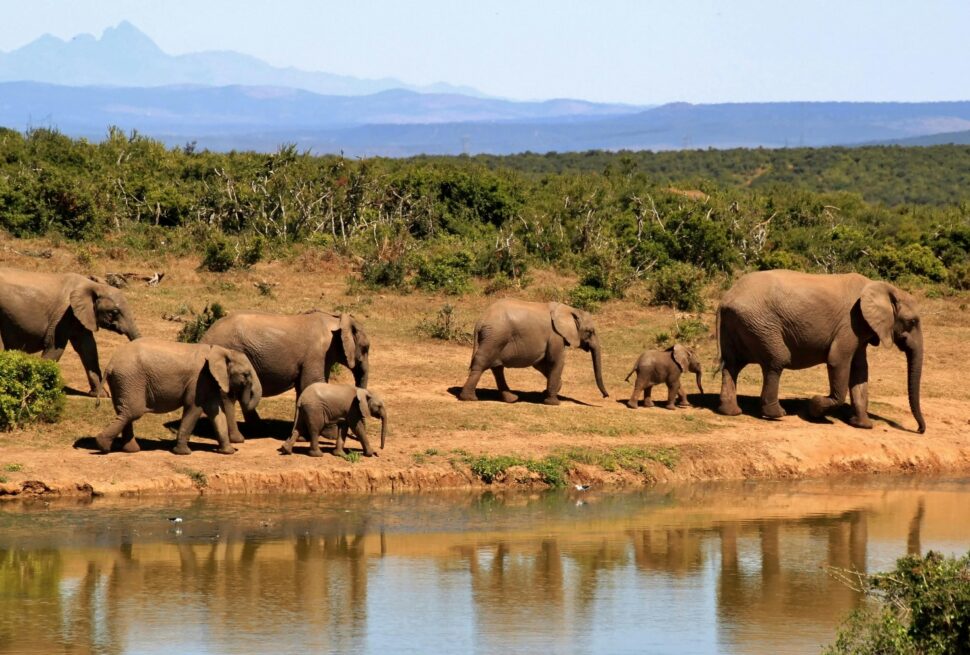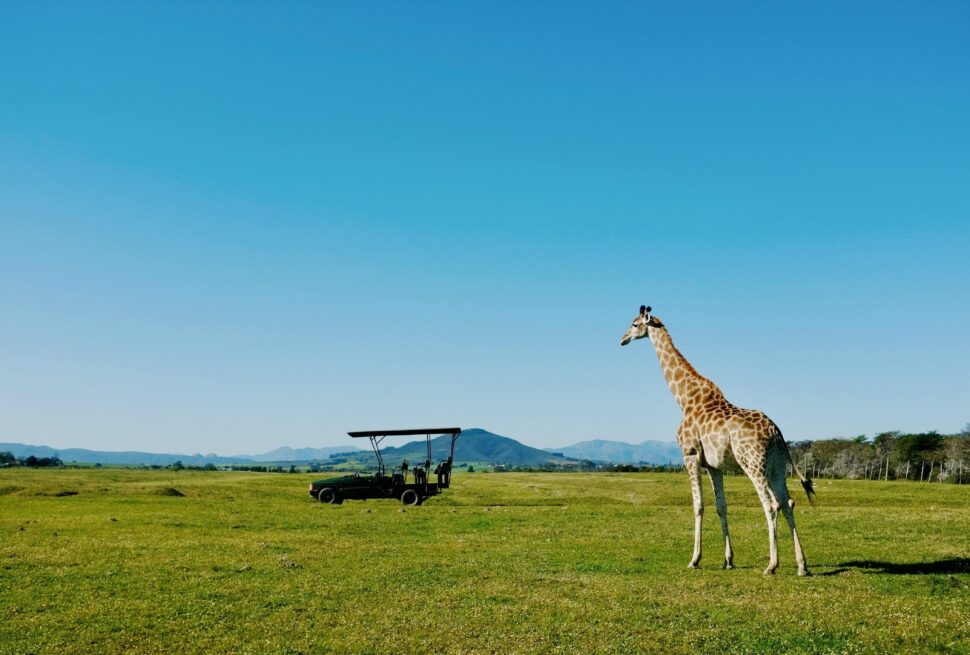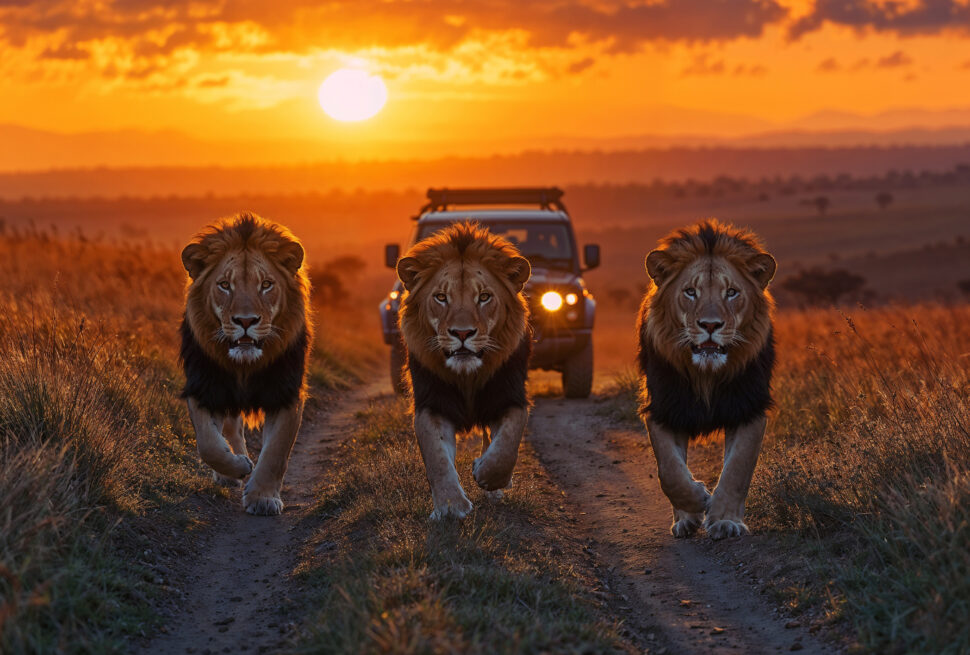The Great Wildebeest Migration is often dubbed the “Greatest Show on Earth,” a spectacle where over 1.5 million wildebeest, 400,000 zebras, and 300,000 gazelles surge across Kenya’s Maasai Mara in a relentless quest for survival. This natural phenomenon, driven by primal instincts and seasonal rains, offers a front-row seat to raw drama: crocodile-infested river crossings, predator ambushes, and the relentless rhythm of life and death. For travelers planning a 2025 safari, this guide unveils the best times to visit, hidden gems, crowd-avoidance strategies, and pro tips to elevate your experience.
1. Timing Your Visit: When to Witness the Migration in 2025
The migration is a year-round event, but Kenya’s Maasai Mara steals the spotlight from July to October when the herds cross the treacherous Mara River. Here’s a monthly breakdown of what to expect:
July: The River Crossings Begin
- Key Event: The first waves of wildebeest arrive at the Mara River, driven by dwindling water and grazing in Tanzania’s Serengeti. Early crossings at Lookout Hill and Cul de Sac in southern Mara offer dramatic scenes of chaos as crocodiles lurk in the murky waters 911.
- Weather: Dry and sunny, with daytime temperatures around 25°C (77°F) 2.
August: Peak Drama
- Highlight: The Mara River crossings reach their zenith, with massive herds plunging into the river at Serena’s Crossing and Paradise Plains. August 15–September 5 is prime time for witnessing thousands of animals navigate crocodile ambushes and strong currents 914.
- Tip: Stay near the Mara Triangle for uninterrupted views. Lodges like Angama Mara and Governors’ Camp offer proximity to these hotspots 915.
September: Post-Crossing Serenity
- Post-Crossing Grazing: Herds spread across the Mara plains, attracting lions, cheetahs, and hyenas. This is ideal for predator-prey interactions and quieter game drives 1113.
- Photography Tip: Golden-hour lighting enhances the savannah’s beauty. Capture herds grazing against sunset backdrops 4.
October: The Return Journey
- Southward Movement: By late October, herds begin returning to the Serengeti, re-crossing the Mara River at Mortuary Crossing (high mortality due to exhausted animals) and Kichwa Tembo Crossing 915.
- Why Visit Now: Fewer crowds and discounted lodge rates as the peak season winds down 13.
2. Hidden Gems: Lesser-Known Hotspots in the Maasai Mara
Avoid the tourist-clogged main reserve and explore these conservancies and secluded zones:
Mara North Conservancy
- Why Visit: This private conservancy limits vehicle numbers, ensuring exclusivity. It’s a prime location for off-road driving and night safaris, where you might spot elusive leopards or aardvarks 25.
- Stay Here: Elephant Pepper Camp offers intimate tented suites with guided bush walks 5.
Olare Motorogi Conservancy
- Perks: Only 94 beds across 35,000 acres, guaranteeing privacy. The Ntiakitiak River attracts herds, and guided walks with Maasai warriors deepen cultural immersion 25.
- Lodge Pick: Mahali Mzuri (Richard Branson’s camp) combines luxury with front-row river views 11.
Naboisho Conservancy
- Wildlife Density: Home to Kenya’s highest lion population. The Enonkishu Valley is a migration corridor with minimal tourist traffic 59.
- Unique Experience: Join a conservation-focused safari to track lions with researchers 15.
Talek River Crossings
- Underrated Spot: While the Mara River hogs attention, the Talek River sees smaller but equally intense crossings, often with fewer vehicles. Rekero Camp offers prime access 69.
3. Insider Tips to Avoid Crowds & Elevate Your Safari
Stay in Conservancies
- Why: Conservancies like Mara North and Olare Motorogi enforce strict visitor limits (e.g., 1 vehicle per sighting vs. 5+ in the main reserve) 25.
- Added Bonus: Many conservancy fees fund community projects, supporting local Maasai communities 15.
Book Early & Strategically
- Peak Demand: Lodges near crossing points (e.g., Governors’ Camp, Serena Safari Lodge) sell out 6–12 months in advance. Opt for mobile camps like Asilia’s Olakira that follow the herds 914.
- Shoulder Season: Visit in late June or early October for lower prices and thinner crowds 13.
Combine Safari with Cultural Visits
- Maasai Village Tours: Engage with the Maasai at Enkang’e Village or Umoja Women’s Village, where you’ll learn traditional dances, beadwork, and pastoral practices 1113.
- Community-Led Experiences: Book a guided walk with Maasai warriors in the Mara Conservancies to track wildlife while hearing ancestral stories 515.
4. Pro Tips for Photography & Unique Experiences
Master the Shot
- Golden Hours: Shoot at dawn or dusk for soft, warm lighting. The sunrise over the Mara plains is iconic 414.
- Fast Shutter Speed: Use 1/1000s or faster to freeze action during river crossings 4.
- Telephoto Lens: A 300mm+ lens captures close-ups of crocodile attacks or panicked herds 13.
- Balloon Safaris: For aerial panoramas, book a hot-air balloon ride at sunrise. Operators like SkySafari offer 1-hour flights ending with champagne breakfasts 714.
Ethical Wildlife Viewing
- Keep Distance: Use binoculars or zoom lenses to avoid stressing animals 9.
- Support Eco-Lodges: Choose camps like Emboo River Camp (carbon-neutral) or Cottar’s 1920s Camp (solar-powered) 615.
5. Crafting Your 2025 Itinerary: A Sample Plan
Day 1–3: Arrive in Nairobi, transfer to Mara North Conservancy. Enjoy night drives and bush walks.
Day 4–5: Shift to Olare Motorogi for riverfront game drives. Visit a Maasai village.
Day 6–7: Fly to the Mara Triangle. Photograph crossings at Serena’s Crossing.
Day 8: Sunrise balloon safari, followed by a cultural tour.
Day 9–10: Explore Naboisho Conservancy; depart via Nairobi.
Conclusion: The Call of the Wild
The 2025 Great Migration promises unparalleled adventure, but success hinges on strategic planning. By prioritizing conservancies, timing your visit for July–October, and embracing cultural exchanges, you’ll witness nature’s grandeur while supporting sustainable tourism. As the Maasai say, “Serian” (peace)—may your safari be filled with awe, respect, and unforgettable moments.
Final Tip: Pack neutral-colored clothing, a wide-brimmed hat, and a reusable water bottle. Book with operators certified by Ecotourism Kenya to ensure ethical practices




